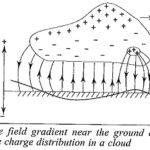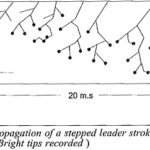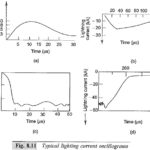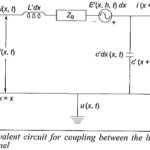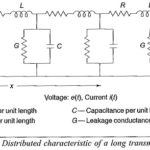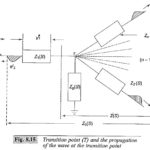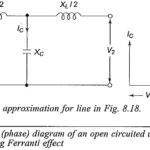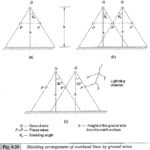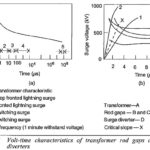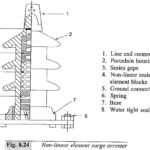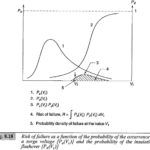Overvoltage Articles:
Simpson Theory of Lightning: The factors that contribute to the formation or accumulation of charge in the clouds are too many and uncertain. But during thunderstorms, positive and negative charges become separated by the heavy air currents with ice crystals in … (Read More)
Lightning Stroke Definition | Mechanism of Lightning Strokes: Lightning Stroke Definition explains that when the electric field intensity at some point in the charge concentrated cloud exceeds the breakdown value of the moist ionized air (≈ 10 kV/cm), an electric streamer … (Read More)
Parameters and Characteristics of Lightning Strokes: The parameters and Characteristics of Lightning Strokes include the amplitude of the currents, the rate of rise, the probability distribution of the above, and the waveshapes of the lightning voltages and currents. Typical oscillograms of the … (Read More)
Mathematical Model of Lightning Stroke: During the charge formation process, the cloud may be considered to be a nonconductor. Hence, various potentials may be assumed at different parts of the cloud. If the charging process is continued, it is probable that … (Read More)
Travelling Waves on Transmission Lines: Any disturbance on a Travelling Waves on Transmission Lines or system such as sudden opening or closing of line, a short circuit or a fault results in the development of overvoltages or overcurrents at that point. … (Read More)
Classification of Transmission Lines: Classification of Transmission Lines are usually classified as Lines with no loss or ideal lines, Lines without distortion or distortion less lines Lines with small losses, and Lines with infinite and finite length defined by all the four parameters. 1.Lines with … (Read More)
Attenuation and Distortion of Travelling Waves: As a Travelling Waves moves along a line, it suffers both attenuation and distortion. The decrease in the magnitude of the wave as it propagates along the line is called attenuation. The elongation or change … (Read More)
Transmission of Waves at Transition Points: Whenever there is an abrupt change in the parameters of a transmission line, such as an open circuit or a termination, the travelling wave undergoes a transition, part of the wave is reflected or sent … (Read More)
Rectangular Travelling Wave: Reflection and transmission of a Rectangular Travelling Wave at junction points of unequal impedances in a transmission line are of great importance in transmission systems. Depending on the type of impedance at transition points, the Rectangular Travelling Wave … (Read More)
Switching Surges in Transmission Line: Till the time when the transmission voltages were about 220 kV and below, over-voltages due to lightning were of very high order and overvoltages generated inside the system were not of much consequence. In later years, … (Read More)
Power Frequency Overvoltages in Power Systems: The Power Frequency Overvoltages occur in large power systems and they are of much concern in EHV systems, i.e. systems of 400 kV and above. The main causes for power frequency and its harmonic overvoltages … (Read More)
Control of Switching Overvoltage: The Control of Switching Overvoltage and power frequency may be controlled by energization of transmission lines in one or more steps by inserting resistances and withdrawing them afterwards, Phase controlled closing of circuit breakers, Drainage trapped charges before reclosing, Use … (Read More)
Transmission Line Overvoltage Protection: Transmission Line Overvoltage Protection against natural or lightning overvoltages and minimizing the lightning overvoltages are done by suitable line designs, providing guard and ground wires, and using surge diverters. Switching surges and power frequency overvoltages are accounted … (Read More)
Insulation Coordination in High Voltage: Electric power supply should ensure reliability and continuity to the utility concerns. Hence, the power lines and sub-stations are to be operated and protected against overvoltages such that the number … (Read More)
Selection of Surge Arresters: These are non-linear resistors in series with spark gaps which act as fast switches. A Selection of Surge Arresters or lightning arrester is shown in Fig. 8.24 and its characteristics are given in Fig. 8.25. A number … (Read More)
Insulation Coordination of Substation: For steep fronted lightning waves at Insulation Coordination of Substation and at different points on lines, the voltages at sub-stations may exceed the protective level depending on the distances involved and the arrester locations. Hence, it is … (Read More)
